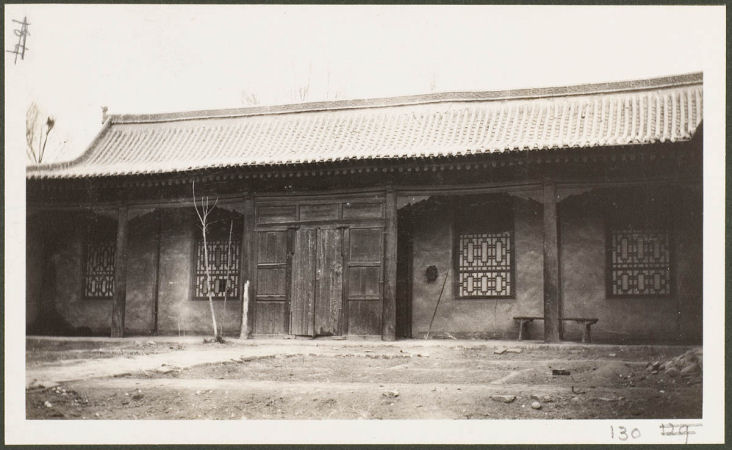
Cette partie des bâtiments semble être la maison proprement dite. On remarquera d'anciennes fondations sur le sol.
YAMEN
En 1881, quittant son activité de commerçant (Splingaerd & Graesel), Paul Splingaerd est nommé fonctionnaire des douanes par le puissant vice-roy Li Hongzang et la recommendation de l'allemand Detring. Paul devient définitivement Lin Fuchen, encore que son prénom ne soit jamais utilisé au profit de Lin (林) . Là où il va, il sera appelé Lin Darin (Ling Darin) ou Lin Taren, ce qui signifie schématiquement "son Excellence Lin". Durant les 14 années de son fonctionnariat comme officier civil des douanes impériales, il gravira lentement les différents échelons de la hiérarchie administrative civile de l'Empire.
Paul pense que devenir fonctionnaire lui donnera une stabilité financière lui permettant d'éléver sa famille. Paul et Catherine ont déjà 7 enfants aînés, nés en Mongolie. Ils en auront bientôt 5 de plus: les enfants 'suzhou'.
Suzhou est une bourgade importante située sur l'antique route de la Soie, dans le nord de la province du Gansu. C'est très loin de Pékin ou de Shangaï (trois ou quatre mois de voyage en caravane). Peu de fonctionnaires souhaitent s'établir à un tel poste isolé où les autochtones ne parlent pas le chinois mandarin. On considère que Lin fut sous ce rapport une sorte d'exception quant à la durée et à son extraordinaire capacité de s'adapter aux langues locales.
Actuellement appelé Jiuquan, l'aspect de la cité de Suzhou (Suchow en anglais) de cette fin du dix-neuvième siècle a été préservé par les descriptions et les photographies du journaliste George Ernest Morrison (1862-1920). Ces photos ont été tirées seulement une vingtaine d'années (datées de 1910) après le départ de Lin et de sa famille mais on constate que l'empreinte de Splingaerd restait dans les mémoires, vu les noms de lieux évoquant Paul Splingaerd (Splingaerd's yamen or Splinagerd's old yamen, etc.).
Nous avons donc le chance de posséder maintenant les photographies de son yamen, c'est à dire de sa maison de fonction. C'est sans doute là que Paul et Catherine ont continué à élever leurs nombreux enfants, à acceuillir les voyageurs et à percevoir l'impôt de douane déterminé par les accords de Saint-Pétersbourg. On ne saurait cependant affirmer avec certitude que le poste de douane correspondait à la maison familiale.

Cette partie des bâtiments semble être la maison proprement dite. On remarquera d'anciennes fondations sur le sol.
This part of the buildings seems to be the house itself. Note old foundations on the ground.

from Anne Splingaerd-Megowan - Los Angeles
Ce bâtiment ancien qui a été préservé et qui se trouve à Jiuquan est représentatif de l'aspect que le yamen de Paul Splingaerd devait avoir à l'époque où il officiait. Photo prise lors du voyage des trois cousins en Chine en 2005.
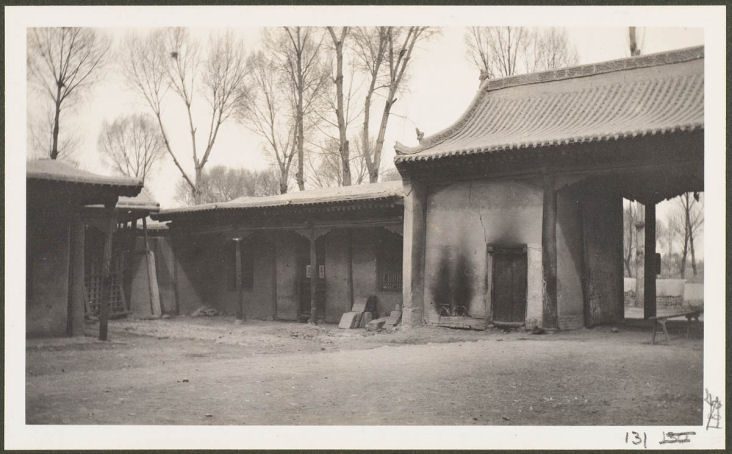
L'ensemble des bâtiments, à cette époque (1910) déjà en ruine, semble être en carré, avec une cour intérieure, capable d'accueillir des caravanes, d'assurer le logement des voyageurs et de leurs animaux. Les traces de fumée correspondent au mode de chauffage de l'époque (sans cheminée).
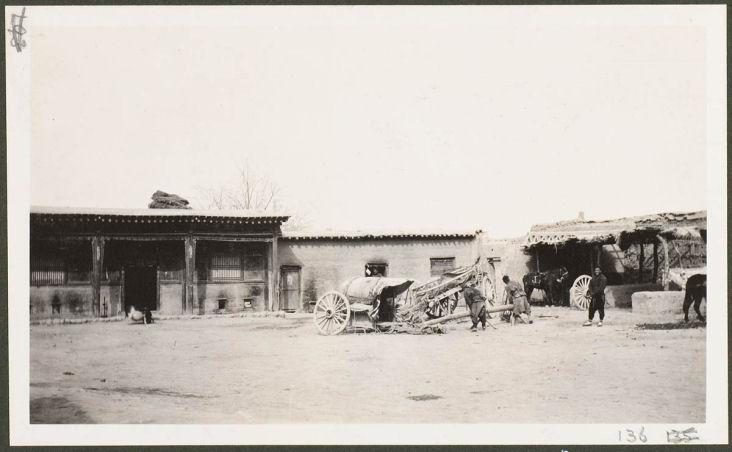
Innyard de Morrison à Suchow qui devait être semblable à celui de Splingaerd

Voici l'URL du site chinois où j'ai trouvé les images
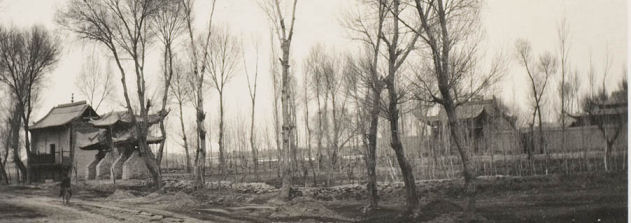
L'allée de Splingaerd. L'intitulé de la photo est "View from Splingaerd's yamen loocking N Suchow". Cela signifie que la photo est prise du yamen vers l'extérieur (vers le Nord) et vers la campagne. On voit clairement que le yamen n'était pas dans la ville.
LA VILLE de SUZHOU en 1910 (Jiuquan - Gansu)
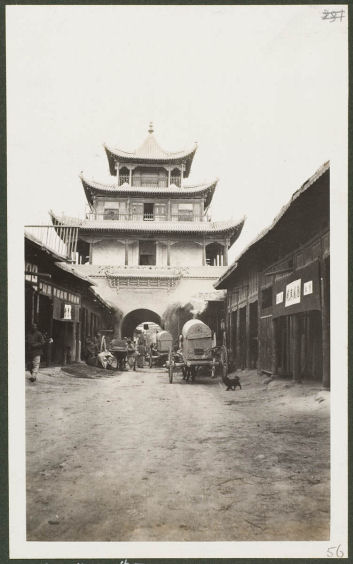 |
L'intitulé de la photo de gauche est "Koulou from East - Suchow". La photo couleur représente peut-être la même porte de Jiuquan photographiée par Angela Cox, avec son cousin Frank Keet, en 2005, lors de leur voyage en Chine. from Anne Splingaerd-Megowan - Los Angeles. La date sur la photo est incorrecte |
|---|
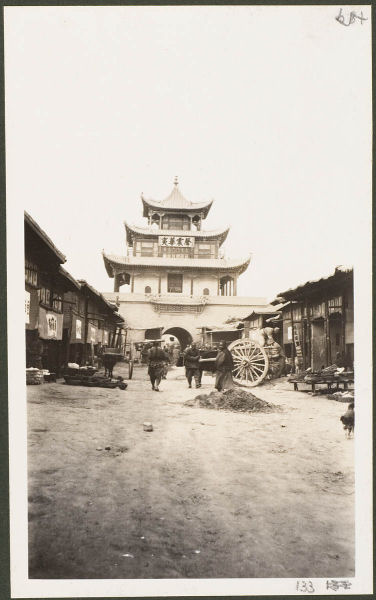 |
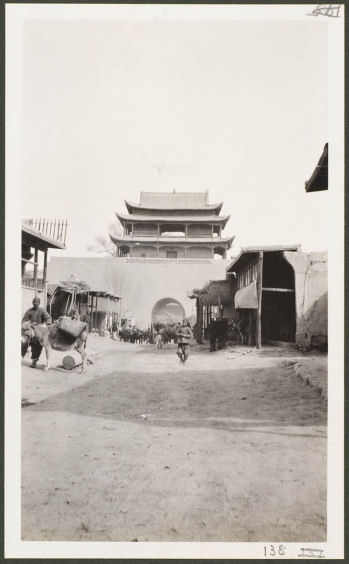 |
|---|---|
| La même porte que précédemment, mais vue du sud | La porte du Nord |
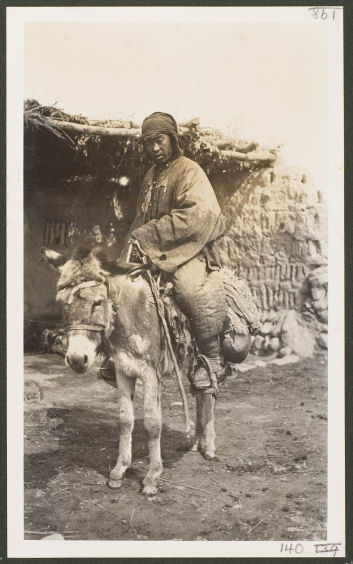 |
 |
|---|
Photos représentatives de la population: le guide local de Morrison et une femme et ses deux filles. On remarquera les pieds bandés de la mère et de la grande fille.
CONCLUSION
Voilà donc les lieux et les gens avec qui Paul et sa famille ont vécu jusqu'en 1896.
Christian Goens - La Louvière - Belgium - july 2008 - tous droits réservés
last update: 1-mai-18